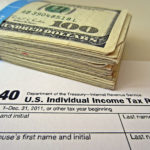Bankruptcy gives you a super power: you’re able to remove liens on your home, for good.
You can’t wipe out every kind of lien. But bankruptcy law allows you to invalidate judicial liens that attach to your home and invade any exemption you are entitled to.
The power is available to individuals in any chapter .
Here’s how it works.
Liens that can be avoided
The avoidance superpower is effective against judicial liens, those arising out of a lawsuit. This statute doesn’t allow you to wipe out statutory liens (like taxes) or consensual liens (like mortgages).
Chapter 13 limits tax liens to the available equity at the start of the case; the balance of the lien is voided.
How much of the lien is voided
Lien avoidance is designed to trim judgment liens down so that folks get the full value of the allowed exemption. Otherwise, a judicial lien would get paid before the exemption.
If there is enough equity in the property to pay both the exemption and the lien, then the lien remains. Or part of the lien survives if there’s some equity after the exemption to which the lien can attach.
The relevant value is what the property is worth on the day the case was filed. That’s why it’s possible to reopen a closed bankruptcy case to avoid a lien that attached to the home before the case was filed. Even if the property has increased in value since then, it’s the value when the case was filed that’s critical.
Let’s look at a couple of examples of lien avoidance and see how it works.
Property value $500,000
Mortgage $425,000
Judgment lien 80,000
Exemption $100,000
Because the mortgage and the exemption ($525,000) total more than the property is worth, the judgment lien is totally wiped out.
But suppose the mortgage is less.
Property value $500,000
Mortgage $375,000
Exemption 100,000
Judgment lien 80,000
In this case, the mortgage and the exemption ($475,000) total less than the value of the property. The judgment lien is cut down to a $25,000 claim on the property ($500,000 – 475,000 = $25,000).
How to remove a lien on your home
While the bankruptcy discharge automatically invalidates judgments, it doesn’t automatically remove judgment liens. For that you have to file a motion in your bankruptcy case to prove that the judgment lien interfers with your exemption.
Your motion sets out the value of the property, the amount of your exemption and the amounts owed on liens that you can’t avoid. Often, if you’ve supported your figures, the lien holder does not oppose the motion.
The order that results from your motion should include the legal description of the property and the amount of any surviving portion of the judgment lien, if any.
Use your superpowers
Removing liens on your home is something that bankruptcy can do and debt settlement can’t. Make sure you know, or find out, whether there are judgment liens in the public record and that you share that knowledge with your bankruptcy attorney.
More
When you can wipe out voluntary liens






